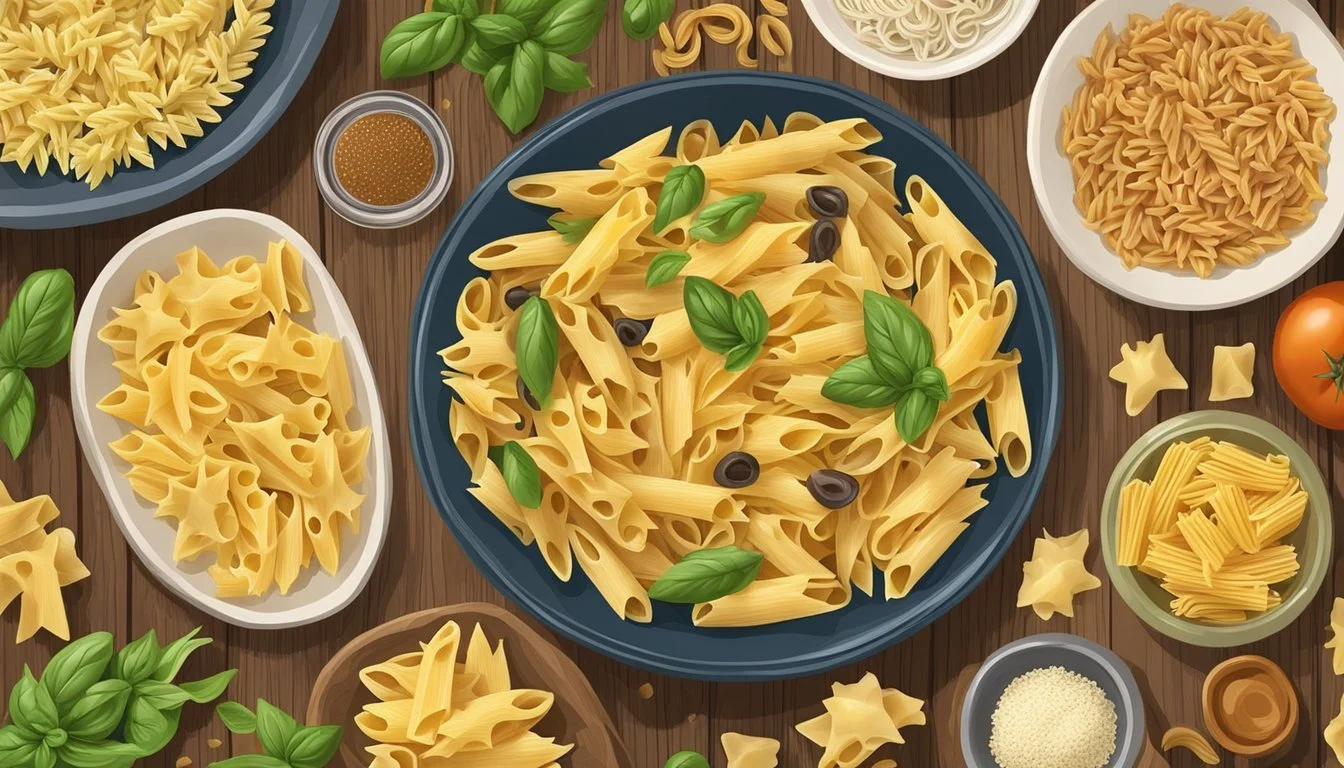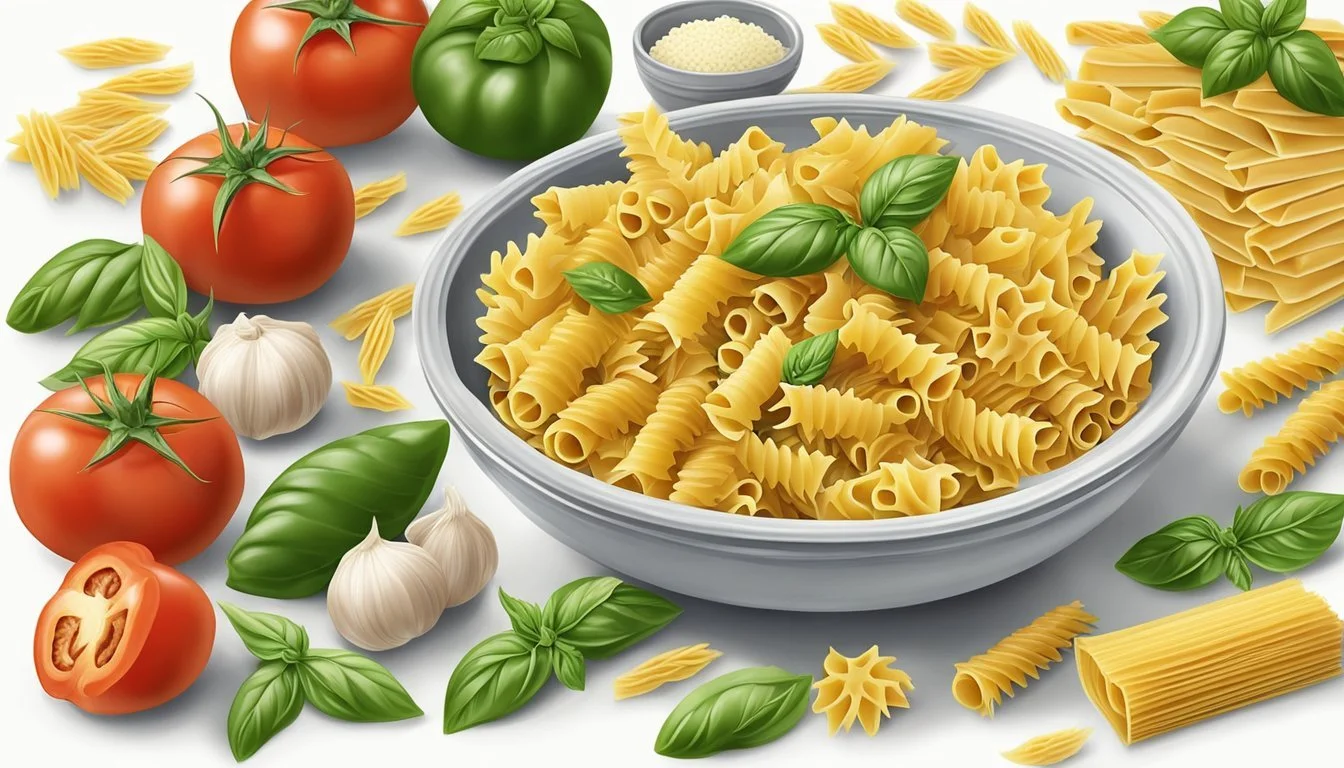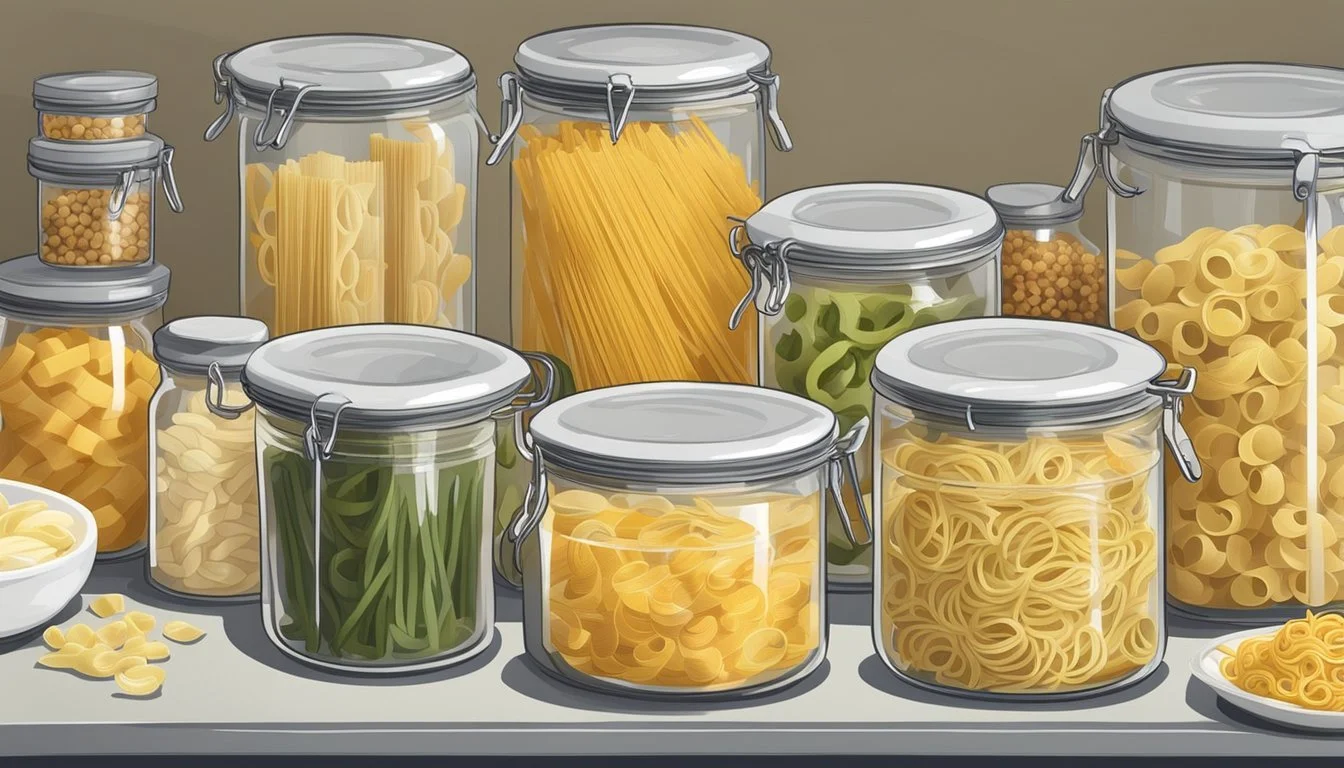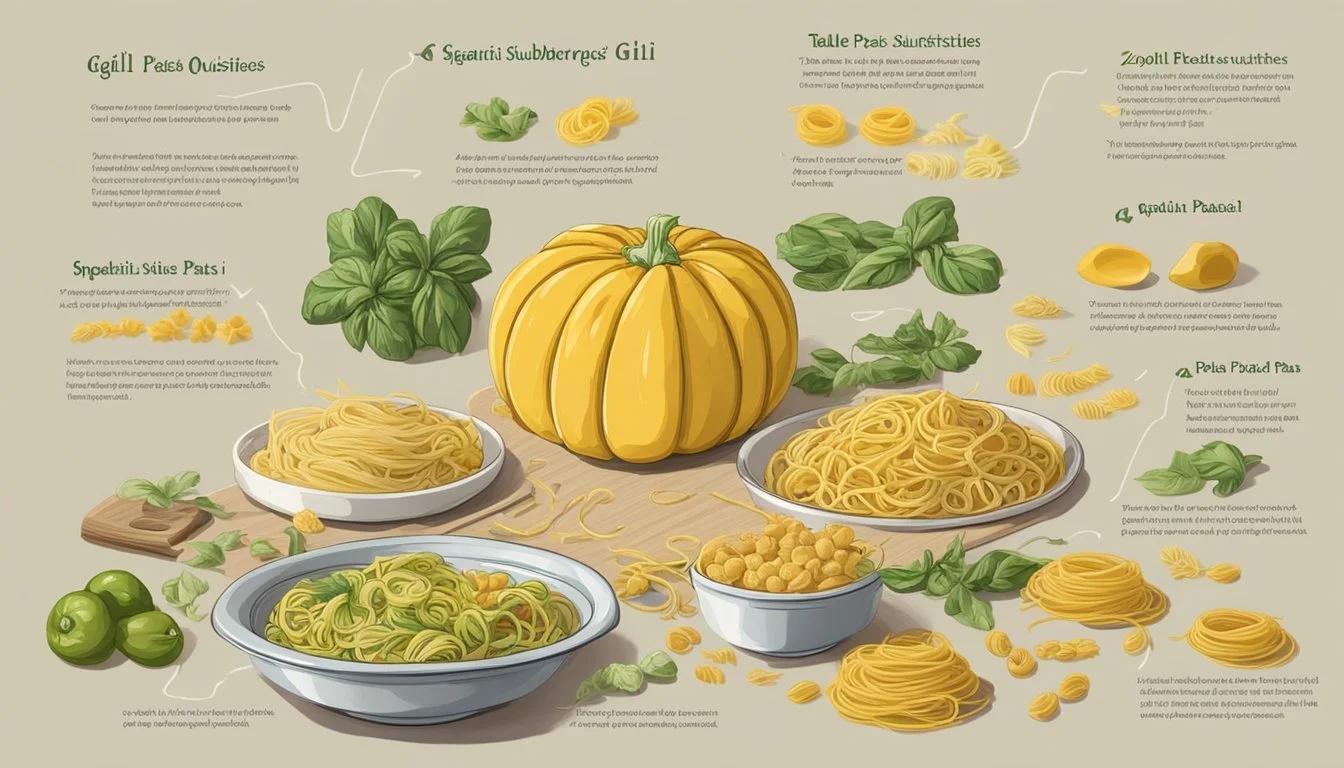Gigli Pasta Substitutes
Top Alternatives for Your Favorite Dish
Gigli pasta (What wine goes well with pasta?), a distinctive, flower-shaped pasta variety, has a fluted edge and a conical shape, resembling a lily or a trumpet. This Italian pasta type is not only visually appealing but holds sauces well, making it ideal for a variety of dishes. However, there are times when gigli pasta may not be readily available or when a suitable alternative is needed due to dietary preferences or a desire for a different texture in a recipe.
For those searching for a gigli pasta substitute, a few alternatives provide similar characteristics in terms of shape and sauce-holding ability. Campanelle pasta, which closely resembles gigli with its ruffled edges and hollow center, is an excellent alternative. Other medium-sized pastas such as casarecce, gemelli, penne, and rotini can also be used in place of gigli. Their distinct shapes allow them to capture and hold onto sauces, embodying the essence of what makes gigli pasta so versatile in the kitchen.
Understanding Gigli Pasta
Gigli pasta, an Italian culinary delight, is renowned for its unique shape reminiscent of lilies. This section explores its Tuscan roots and distinctive characteristics, along with tried-and-true cooking methods for perfect texture.
Origins and Characteristics
Originating from the rolling hills of Tuscany, gigli pasta is celebrated in Italian cuisine for its bellflower-like appearance, earning it the name "gigli," which is Italian for "lilies." This pasta has a distinctive ruffled edge, which not only contributes to its visual appeal but also enhances its ability to capture sauce, elevating the culinary experience. Traditionally made with durum wheat and water, the absence of egg in gigli pasta distinguishes it from other kinds of pasta dough.
Cooking Techniques and Times
To achieve the quintessential al dente texture, one should immerse gigli pasta in boiling salted water. The ruffled edges and thicker center of gigli create a need for careful timing during cooking. Standard cooking time for gigli pasta ranges from 7 to 10 minutes; however, it is advised to reference package instructions as varying thicknesses can affect the duration. Stirring occasionally in the boiling water helps prevent sticking and promotes even cooking. Once the pasta reaches a firm yet tender texture, it should be promptly drained to halt the cooking process.
Suitable Gigli Pasta Substitutes
Finding the right substitute for gigli pasta, often known for its bellflower shape and ruffled edges, is essential for maintaining the integrity of a pasta dish. Two main categories for substitutes include alternative pasta shapes that mimic the texture and structure of gigli, and gluten-free or vegetable options for those with dietary restrictions.
Alternative Pasta Shapes
When replicating the distinctive texture and appearance of gigli pasta, several pasta shapes can serve as satisfactory substitutes. The following table lists the pasta shapes along with their key similarities to gigli:
Substitute Pasta Similarity to Gigli Fusilli Corkscrew shape captures sauce similarly to gigli's ruffles Cavatappi Spiral shape with ridges akin to gigli Conchiglie Shell-like form, excellent for holding sauces Farfalle Pinched middle, creates a texture akin to gigli when bitten Penne Tubular shape with ridges, ideal for many of the same sauces Rigatoni Ridges and tube-like structure, larger than gigli but similar in functionality Macaroni Short, curved pasta, different in shape but capable of substituting in a pinch Fettuccine Flat, thick noodles that offer a different texture but work in similar recipes
These shapes, while not identical, offer a satisfying alternative in dishes that typically feature gigli pasta.
Gluten-Free and Vegetable Options
For individuals requiring a gluten-free diet, or those who are seeking to include more vegetables in their meals, several innovative substitutes offer the flavors and textures of traditional pastas without the gluten:
Gluten-Free Pasta Options: Made from various gluten-free grains such as rice, corn, or quinoa, (What wine goes well with quinoa?) these pastas are designed to mimic classic pasta's texture.
Zucchini Noodles: Zucchini can be spiralized into noodles, providing a light, healthy substitute with a similar ability to ruffle as gigli.
Sweet Potato Noodles: Another vegetable option, sweet potato noodles offer a sweeter taste but can be a delightful stand-in for heartier pasta dishes (What wine goes well with pasta dishes?).
These options ensure that everyone can enjoy a pasta-like experience, regardless of dietary preferences or restrictions.
Pairing Sauces and Flavors with Substitutes
When selecting a substitute for gigli pasta, it's crucial to consider the pasta's surface area and grooves as these influence sauce adherence and the overall flavor profile of the dish.
Matching Sauces to Pasta Texture
Substitutes such as fusilli and cavatappi mirror gigli's spiral shape, making them excellent at holding onto sauces. Here's how to pair them:
Thick, creamy sauces: Their ridges cling to rich, creamy textures. Think Alfredo or carbonara laden with butter, parmesan cheese, and black pepper.
Rich tomato sauces: Spiral substitutes trap hearty tomato sauce, ensuring each bite is flavorful. Garnish with basil to enhance the tomato's natural acidity.
Herbs and Cheese Enhancements
The addition of herbs and cheeses can elevate a pasta dish substantially:
Herbs: Fresh basil, when subtly incorporated, complements tomato-based sauces. For something richer or creamier, a dash of black pepper adds depth without overwhelming the palate.
Cheese: A generous sprinkle of parmesan, mozzarella, or pecorino romano adds a savory note. For a more distinct flavor, goat cheese can be used as a tangy contrast to the creamy backdrop.
Each substitute, selected with intention, can honor the integrity of gigli pasta's interplay with sauces and flavors, ensuring a delightful culinary experience.
Recipes and Dish Ideas
Gigli pasta, with its unique shape, isn't always on hand in home pantries. However, there's no need to worry; spaghetti stands as a highly adaptable substitute for gigli in a range of Italian dishes. By making informed choices on alternative pasta shapes, one can still create sumptuous Italian recipes that are rich in flavor and retain the essence of the traditional dish.
Pasta Salad Creations
Pasta salads are a refreshing option, particularly when using spaghetti as a stand-in for gigli pasta. Spaghetti is versatile enough to blend with various mix-ins and dressings, creating an array of pasta salads.
Italian Pasta Salad: Toss cooked spaghetti with Italian dressing, cherry tomatoes, cucumbers, spinach, and a mix of cheeses.
Seafood Salad: Combine cooked spaghetti with seafood such as shrimp or flaked fish, lemon juice, olive oil, and fresh herbs.
One can easily add protein such as chicken strips or canned tuna to these salads to amplify the nutrient content and introduce a layer of varied texture.
Comforting Baked Pasta Dishes
When it comes to baked pasta, spaghetti proves to be a formidable substitute for gigli.
Mac and Cheese: A classic dish where cooked spaghetti is enveloped in a rich, creamy cheese sauce and baked until golden.
Ingredients Quantity Spaghetti 8 ounces Cheddar Cheese 1 1/2 cups Milk 1 cup Butter 2 tablespoons Flour 2 tablespoons
Lasagna: Use spaghetti as a layer instead of traditional lasagna sheets, layering with ragu sauce, bechamel, and a variety of meats or vegetables.
Preheat oven to 375°F (190°C).
Lay cooked spaghetti flat in a greased baking dish, alternating with sauce and cheese layers.
Bake for 45 minutes.
In both of these dishes, the spaghetti absorbs the sauces and cheeses, coming remarkably close to replicating the gigli pasta experience while adding its own delightful texture. The seamless incorporation of spaghetti into these dishes underscores its universal appeal and compatibility with a range of Italian sauces and cheeses.
Health and Dietary Considerations
When considering gigli pasta substitutes, one must take into account both the caloric and carbohydrate content along with protein alternatives, especially for those following meatless diets.
Counting Calories and Carbs
Those mindful of their calorie and carb intake may gravitate towards low-carb alternatives such as zucchini noodles or shirataki noodles which are significantly lower in calories compared to traditional pasta. For instance, zucchini noodles provide a mere fraction of the calories while offering a source of nutrients such as vitamin C, potassium, and antioxidants. Similarly, shirataki noodles, made from the konjac plant, are virtually carb-free and very low in calories.
Protein-Rich Substitutes for Meatless Diets
Vegetarians often seek protein-rich substitutes to ensure their nutritional needs are met. Options such as quinoa pasta are excellent since quinoa is a complete protein, containing all nine essential amino acids. Broccoli and spinach may also serve as nutritious add-ons to pasta dishes, enriching them with fiber, vitamins, and additional protein. Those opting for a gluten-free diet can consider brown rice pasta; it retains a texture similar to that of regular pasta while being a valuable source of protein and fiber.
Substitute Protein Fiber Notes Quinoa Pasta High High Complete protein, gluten-free, nutritious Brown Rice Pasta Moderate High Gluten-free, good texture, higher in protein Zucchini Noodles Low Low Low-calorie, low-carb, nutrient-rich Shirataki Noodles Low Low Low-calorie, carb-free, minimal protein
For those who are vegetarian or are looking for gluten-free options, this list provides confident and knowledgeable suggestions that adhere to these specific health and dietary considerations.
Preparation and Storage Tips
For successful preparation and storage of gigli pasta substitutes, one needs to master both the cooking and the preservation process to ensure quality and taste.
Proper Cooking and Drying Techniques
When preparing pasta dough for gigli substitutes, the key is to use cold water if egg is not included in the recipe. Rolling the dough into thin sheets, similar to gigli, they should then be well-shaped depending on the substitute pasta type. Cooking times will vary, but a general rule of thumb is to cook until al dente—usually a matter of minutes.
The process of drying gigli pasta involves laying the pieces flat on a drying rack, allowing air to circulate freely. This step is crucial to avoid spoilage and clumping. Drying can take anywhere from 24 to 48 hours, dependent on the substitute's thickness and ambient humidity.
Storing Substitutes for Freshness
There are two main paths to storing pasta: refrigeration and freezing. Fresh homemade pasta substitutes can typically be refrigerated for up to 3 days.
For long-term storage, freestanding substitutes should be dusted with a bit of flour to prevent sticking and then frozen. Storage in airtight containers or freezer bags will protect the pasta from freezer burn and preserve its quality. Labeling the storage container with the date of freezing helps keep track of how long the pasta has been stored.
Frequently Asked Questions
What are the best substitutes for Gigli pasta?
When Gigli, or campanelle pasta, is unavailable, suitable substitutes include:
Fusilli: Its corkscrew shape mimics the texture and look of Gigli.
Cavatappi: Spiral-shaped, similar to campanelle, making it great for holding sauces.
Farfalle: Sometimes known as "butterfly pasta," works well in cold dishes like pasta salads.
How do you properly cook pasta substitutes to match the texture of Gigli pasta?
For pasta substitutes to resemble the al dente texture of Gigli pasta, follow these tips:
Instructions: Adhere to the package instructions for cooking times.
Testing: Start checking pasta a few minutes before the indicated time for a firmer bite.
Cooling: Rinse with cold water if using in a salad to stop further cooking.
Are there gluten-free options for Gigli pasta substitutes?
Yes, gluten-free options include:
Corn-based pasta: Available in shapes similar to fusilli or farfalle.
Rice pasta: Comes in various shapes that can work as replacements.
When using gluten-free pasta, it's important to:
Cooking time: Monitor closely as they often cook faster than wheat-based pastas.
Texture: Be aware they can become mushy if overcooked.
Can you use these substitutes in any recipe calling for Gigli pasta?
These pasta shapes are versatile, so one can use them in most recipes that call for Gigli. Just be mindful of:
Sauce pairing: Heavier sauces may require sturdier pasta like cavatappi.
Salads and lighter dishes: Farfalle and fusilli can add an appealing look and texture.









